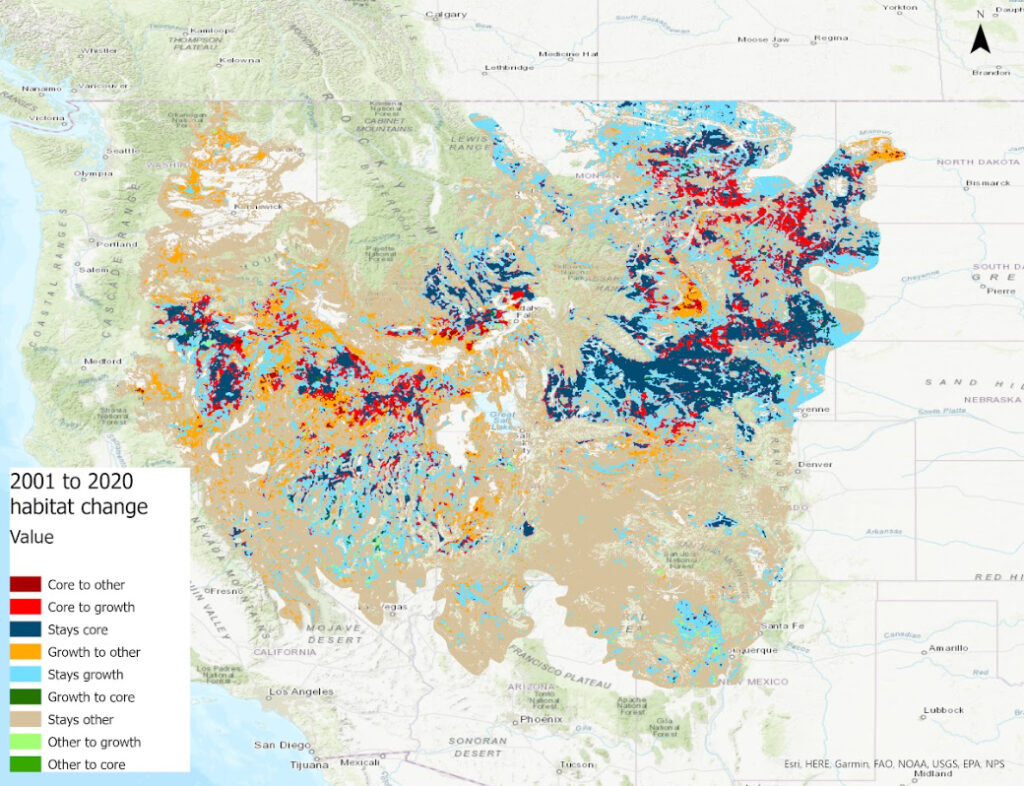
Geospatial analyses and interactive data visualization approaches are informing proactive conservation planning and better targeting in the sagebrush ecosystem.
Project Description:
The Changing Landscapes Lab is developing a comprehensive, spatiotemporal characterization of the sagebrush biome in the western US, filling in critical knowledge gaps about the history and future of this ecosystem. Collating findings in an interactive web-based application, we are improving the accessibility of management-relevant data to inform proactive conservation across agencies and jurisdictions.
To understand how the sagebrush biome has changed, CLL is quantifying trends in core sagebrush habitat over time and identifying prospective causes of decline. Providing an understanding of how much this ecosystem has changed, where and how fast these changes have occurred, and the drivers of such change is helping to improve spatial targeting for more effective conservation.

(Credit: Patrick Bosiger)
Despite major investments in conservation in recent years, core sagebrush habitat continues to decline. CLL is developing a scenario-driven analysis to evaluate the outcomes of prospective conservation design alternatives in the sagebrush biome, highlighting divergent futures for the biome in response to conservation targeting, stakeholder cooperation, and strategic addition of resources. By evaluating the pace and expenditure of past and potential future conservation across the landscape, we are generating support for additional conservation investments to halt future decline and recover ecosystem function.
Together with a diverse group of stakeholders invested in the conservation of the sagebrush biome, the Changing Landscapes Lab is leading the effort to use past trends to improve the future trajectory of this ecosystem.
Read More: A sagebrush conservation design to proactively restore America’s sagebrush biome.



